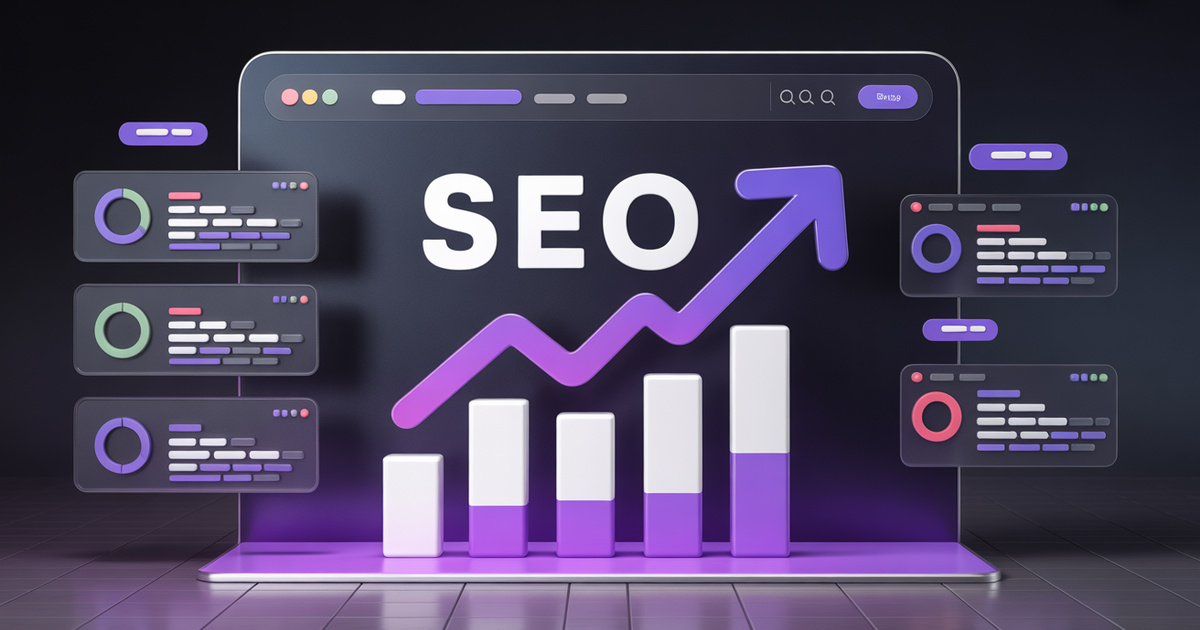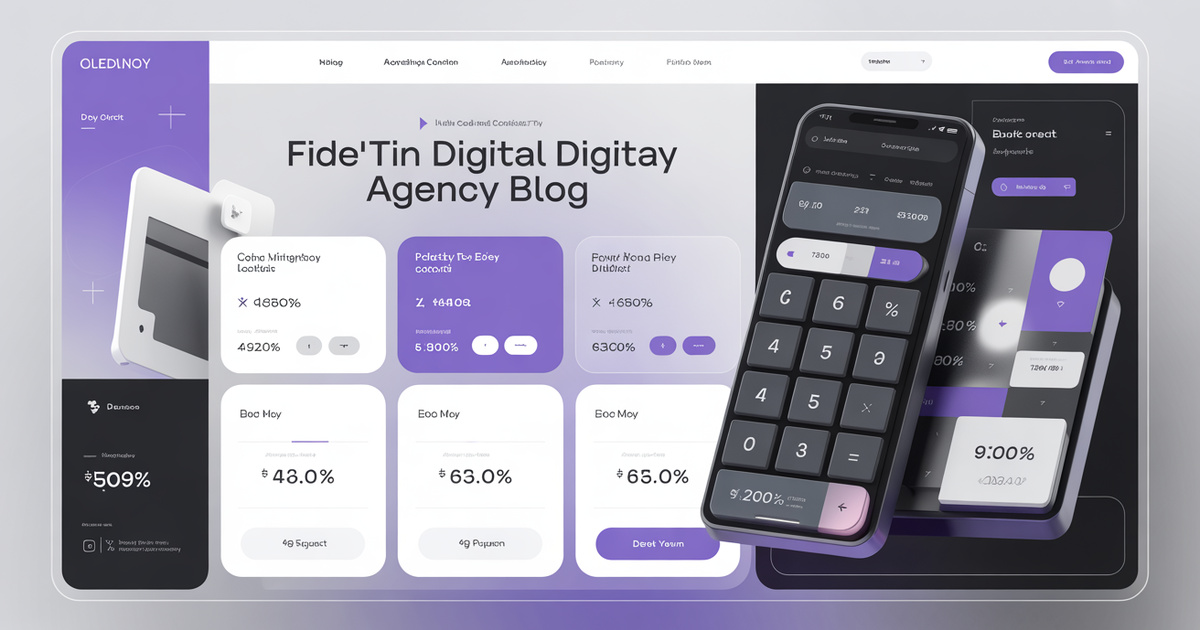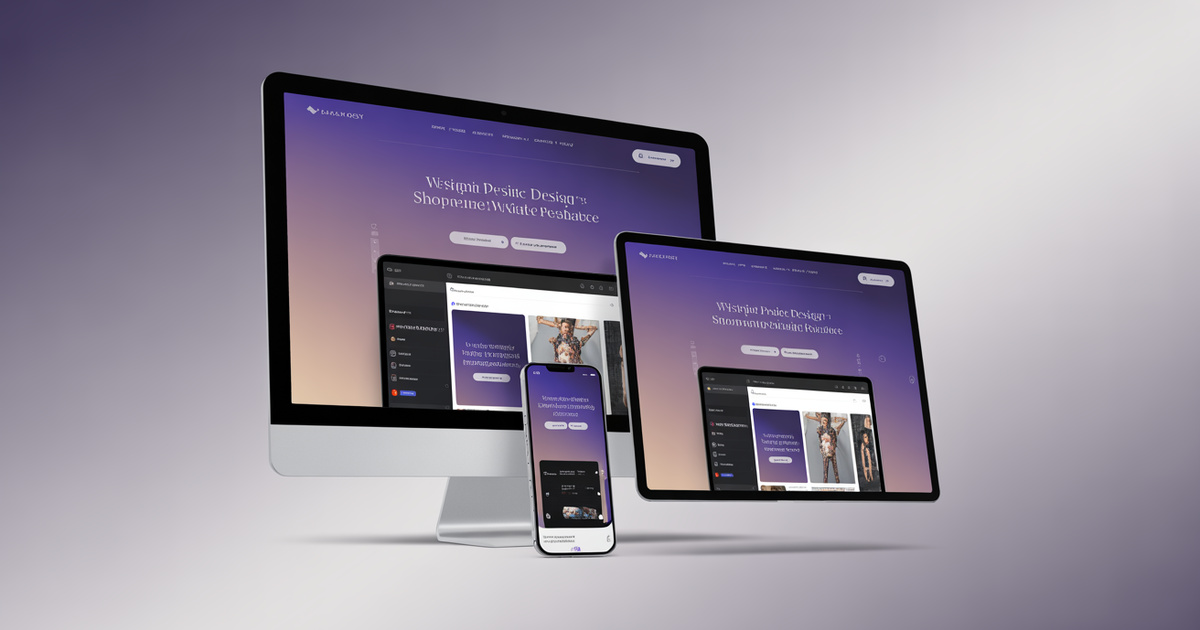SEO-Friendly Web Design: Essential Features for 2025
Discover the critical technical and design elements that help your website rank higher in search results and attract more organic traffic.

SEO-Friendly Web Design: Essential Features for 2025
Creating a beautiful website is only half the battle. If potential customers can't find you in search results, your website isn't fulfilling its purpose. SEO (Search Engine Optimisation) must be built into your website from the ground up—it's not something you can effectively add later. In this comprehensive guide, we'll explore the essential features that make websites rank higher in search results and attract more organic traffic in 2025.
Get Your Free Web Design Quote with built-in SEO optimisation.
Why SEO Matters More Than Ever
The statistics are compelling: 68% of online experiences begin with a search engine, and 75% of users never scroll past the first page of search results. If your website isn't ranking well, you're invisible to the majority of potential customers.
Key SEO Statistics for UK Businesses:
- 93% of online experiences begin with a search engine
- 70-80% of users ignore paid ads, focusing on organic results
- The #1 position in Google gets 28.5% of all clicks
- 75% of searchers never click past the first page
- Mobile searches account for 60%+ of all Google searches
At Silver Spider Media, we've seen dramatic results when clients prioritise SEO-friendly design. When we rebuilt the website for LA Engineering Northwest with comprehensive SEO optimisation, their organic traffic increased by 340% within six months, and they now rank #1 for multiple industry keywords.
Technical SEO Foundations
The technical foundation of your website dramatically impacts search rankings. These elements must be implemented correctly from day one:
1. Fast Page Load Speed
Google confirmed page speed as a ranking factor, and it's more critical than ever. Users expect pages to load in under 3 seconds—anything slower increases bounce rates dramatically.
Essential Speed Optimisations:
- Image compression and modern formats (WebP)
- Minified CSS and JavaScript
- Browser caching implementation
- Content Delivery Network (CDN) usage
- Optimised hosting solutions
- Lazy loading for below-the-fold content
- Reduced HTTP requests
- Code splitting for faster initial loads
Real Results: When we optimised Premium CNC Cut & Design's website for speed, reducing load time from 8.5 to 1.2 seconds, their average search position improved by 15 places across tracked keywords within three months.
2. Mobile-First Design
Google uses mobile-first indexing, meaning it primarily uses the mobile version of your site for indexing and ranking. A website that doesn't work perfectly on mobile devices will struggle to rank well.
Mobile SEO Requirements:
- Responsive design that adapts to all screen sizes
- Touch-friendly navigation and buttons
- Readable text without zooming (minimum 16px font)
- No horizontal scrolling
- Fast mobile loading speeds
- Mobile-friendly forms
- Appropriately sized images for mobile
3. HTTPS Security
Google requires HTTPS for all websites. Sites without SSL certificates are marked "Not Secure" in browsers and receive ranking penalties.
HTTPS Benefits:
- Improved search rankings
- User trust and confidence
- Data protection for form submissions
- Requirement for modern web features
- Protection against security vulnerabilities
All Silver Spider Media websites include SSL certificates as standard, ensuring security and SEO benefits.
4. Clean URL Structure
URLs should be descriptive, readable, and organised logically.
Good URL Structure:
yoursite.com/services/web-designyoursite.com/blog/seo-guideyoursite.com/[portfolio](/portfolio)/accountancy-website
Poor URL Structure:
yoursite.com/page.php?id=123yoursite.com/index.php?category=5&post=789yoursite.com/folder1/folder2/page-old-2020
Best Practices:
- Use hyphens to separate words (not underscores)
- Keep URLs short and descriptive
- Include target keywords naturally
- Maintain consistent structure
- Avoid unnecessary parameters
- Use lowercase letters
5. XML Sitemaps
An XML sitemap helps search engines discover and index all your pages efficiently.
Sitemap Requirements:
- Include all important pages
- Update automatically when content changes
- Submit to Google Search Console
- Include priority and change frequency indicators
- Exclude duplicate or low-value pages
On-Page SEO Elements
Every page on your website needs proper optimisation:
1. Title Tags
The title tag is one of the most important on-page SEO elements. It appears in search results and browser tabs.
Title Tag Best Practices:
- 50-60 characters optimal length
- Include primary keyword near the beginning
- Make titles unique for every page
- Include brand name (usually at the end)
- Write compelling, click-worthy titles
- Avoid keyword stuffing
Example:
- Good: "Professional Web Design Belfast | Silver Spider Media"
- Poor: "Home | Silver Spider Media | Belfast | Website Design | Web Design"
2. Meta Descriptions
Meta descriptions don't directly affect rankings but significantly impact click-through rates.
Meta Description Guidelines:
- 150-160 characters optimal length
- Include target keywords naturally
- Write compelling copy that encourages clicks
- Make each description unique
- Include a call-to-action when appropriate
- Accurately describe page content
3. Header Tags (H1-H6)
Proper header hierarchy helps search engines understand content structure and importance.
Header Tag Best Practices:
- One H1 per page (usually the page title)
- Use H2s for major sections
- Use H3-H6 for subsections
- Include keywords naturally in headers
- Make headers descriptive and useful
- Maintain logical hierarchy
4. Image Optimisation
Images need optimisation for both speed and SEO:
Image SEO Checklist:
- Descriptive, keyword-rich filenames (
web-design-[portfolio](/portfolio).jpgnotIMG_1234.jpg) - Comprehensive alt text for accessibility and SEO
- Compressed file sizes (without quality loss)
- Appropriate dimensions (don't serve massive images scaled down with CSS)
- Modern formats like WebP where supported
- Lazy loading for below-the-fold images
- Title attributes where appropriate
5. Internal Linking
Strategic internal linking helps search engines understand your site structure and distributes page authority.
Internal Linking Strategy:
- Link to relevant pages naturally within content
- Use descriptive anchor text (not "click here")
- Create logical site hierarchy
- Link to important pages more frequently
- Ensure all pages are accessible within 3 clicks from homepage
- Fix broken internal links promptly
View Our Portfolio to see examples of SEO-optimised websites.
Content Strategy for SEO
Quality content is the foundation of SEO success:
1. Keyword Research and Targeting
Understanding what your customers search for is essential.
Keyword Strategy:
- Research keywords using tools like Google Keyword Planner
- Target a mix of high-volume and long-tail keywords
- Focus on user intent, not just search volume
- Create dedicated pages for important keywords
- Use keywords naturally in content
- Avoid keyword stuffing (write for humans first)
Example for a Landscaping Company:
- Primary keywords: "landscaping Belfast", "garden design Northern Ireland"
- Secondary keywords: "professional gardeners Belfast", "landscape architects NI"
- Long-tail keywords: "how much does landscaping cost Belfast", "best landscape designers Northern Ireland"
2. Content Quality and Depth
Google favours comprehensive, valuable content that truly answers user questions.
Content Guidelines:
- Write in-depth content (1000-2000+ words for important pages)
- Answer common customer questions thoroughly
- Use clear, readable language (avoid unnecessary jargon)
- Include relevant examples and case studies
- Update content regularly to keep it fresh
- Ensure accuracy and cite sources when appropriate
Case Study: Eden Gardens NI's blog content strategy, focusing on comprehensive landscaping guides and project showcases, helped them rank #1 for multiple competitive keywords, driving enquiries up by 250%.
3. Fresh Content Through Blogging
Regular blog posts signal to Google that your site is active and authoritative.
Blog SEO Strategy:
- Publish consistently (weekly or bi-weekly minimum)
- Target specific long-tail keywords
- Answer common customer questions
- Create comprehensive guides
- Link internally to relevant service pages
- Include clear calls-to-action
- Optimise posts with proper on-page SEO
Technical Considerations
1. Schema Markup
Structured data helps search engines understand your content better and can result in rich snippets.
Essential Schema Types:
- LocalBusiness schema for location-based businesses
- Organisation schema for company information
- Service schema for services offered
- Review schema for testimonials
- Article schema for blog posts
- BreadcrumbList schema for navigation
Benefits:
- Rich snippets in search results
- Better visibility
- Improved click-through rates
- Enhanced local search presence
2. Core Web Vitals
Google's Core Web Vitals are critical ranking factors measuring user experience:
The Three Metrics:
- Largest Contentful Paint (LCP): Page loading speed (should be under 2.5 seconds)
- First Input Delay (FID): Page interactivity (should be under 100 milliseconds)
- Cumulative Layout Shift (CLS): Visual stability (should be under 0.1)
Optimisation Strategies:
- Optimise server response times
- Implement efficient caching
- Optimise images and media
- Remove render-blocking resources
- Use font-display CSS to prevent layout shifts
- Set size attributes for images and videos
3. Mobile Usability
Beyond responsive design, mobile usability includes:
- Adequate tap target sizes (minimum 48x48 pixels)
- No horizontal scrolling
- Readable text without zooming
- Mobile-friendly navigation
- Fast mobile page speeds
- No intrusive interstitials
- Mobile-optimised forms
Local SEO for UK Businesses
For businesses serving specific geographic areas, local SEO is critical:
1. Google Business Profile
A complete, optimised Google Business Profile is essential.
Optimisation Checklist:
- Accurate business information (name, address, phone)
- Consistent NAP (Name, Address, Phone) across the web
- Comprehensive business description
- Relevant categories
- High-quality photos
- Regular posts and updates
- Customer reviews (and responses)
- Accurate business hours
2. Local Keywords
Target location-specific keywords throughout your website.
Local Keyword Examples:
- "web design Belfast"
- "accountants in Derry"
- "plumbers Manchester"
- "garden design Northern Ireland"
- "engineering services Northwest England"
3. Local Citations
Consistent business listings across directories improve local rankings.
Key Directories:
- Google Business Profile
- Bing Places
- Yelp
- Thomson Local
- Scoot
- Yell.com
- Industry-specific directories
4. Location Pages
For businesses serving multiple locations, create dedicated pages for each area.
Location Page Content:
- Unique content for each location
- Specific local keywords
- Location-specific testimonials
- Local landmarks and directions
- Embedded Google Maps
- Local contact information
Common SEO Mistakes to Avoid
1. Duplicate Content Every page should have unique content. Duplicate content confuses search engines and dilutes ranking potential.
2. Neglecting Mobile With mobile-first indexing, poor mobile experiences directly harm rankings.
3. Ignoring Page Speed Slow websites frustrate users and get penalised by Google.
4. Keyword Stuffing Unnaturally repeating keywords looks spammy and hurts rankings.
5. Thin Content Pages with minimal content provide little value and won't rank well.
6. Missing Alt Text Images without alt text miss SEO opportunities and fail accessibility requirements.
7. Broken Links Broken internal and external links hurt user experience and SEO.
8. No SSL Certificate HTTP websites are marked as insecure and receive ranking penalties.
Measuring SEO Success
Track these metrics to evaluate your SEO performance:
Key Metrics:
- Organic traffic growth
- Keyword rankings
- Click-through rates (CTR)
- Bounce rate
- Time on site
- Pages per session
- Conversion rate from organic traffic
- Domain authority
Essential Tools:
- Google Search Console
- Google Analytics
- Google Business Profile Insights
- SEO tracking tools (SEMrush, Ahrefs, Moz)
- Page speed testing tools
The Silver Spider Media SEO Approach
Every website we build includes comprehensive SEO optimisation:
Our SEO Process:
- Keyword Research: Identifying target keywords based on your business and competition
- Technical Foundation: Fast, secure, mobile-friendly websites with clean code
- On-Page Optimisation: Proper title tags, meta descriptions, headers, and content
- Content Strategy: Creating valuable content that ranks and converts
- Local SEO: Optimising for local search (Google Business Profile, local citations)
- Ongoing Optimisation: Regular updates and improvements based on performance data
Proven Results:
- Average 200-400% increase in organic traffic within 6 months
- Clients ranking on page 1 for competitive keywords
- Increased qualified leads from search engines
- Measurable ROI from organic search
Take Action Today
SEO isn't optional in 2025—it's essential for online success. Don't let poor SEO hold your business back.
Next Steps:
-
Get Your Free SEO-Optimised Quote: All our websites include comprehensive SEO optimisation from day one.
-
Book a Free Consultation: Discuss your SEO needs and learn how we can improve your search visibility.
-
View SEO Success Stories: See how we've helped businesses across the UK and Ireland dominate search results.
Remember: SEO is a long-term investment that delivers ongoing returns. Start with a properly optimised website, and you'll enjoy increased visibility, traffic, and leads for years to come.
Silver Spider Media builds SEO-friendly websites that rank well and drive real business results. With over 60 successful projects across the UK and Ireland, we understand what it takes to succeed in competitive search markets. Contact us today to transform your online visibility.
Ready to Transform Your Business?
Join hundreds of successful businesses across the UK & Ireland who trust Silver Spider Media for their digital presence. Get your personalised quote today.
Our Web Design Services
Discover how we can help transform your online presence with our comprehensive digital solutions:
See These Strategies in Action
Check out how we've implemented these web design principles for real businesses:
Real results from our portfolio
Real results from our portfolio
Real results from our portfolio
Real results from our portfolio
Ready to Transform Your Online Presence?
Get a free, personalised quote in just 5 minutes. See exactly what your website will cost—no obligation, no surprises.


